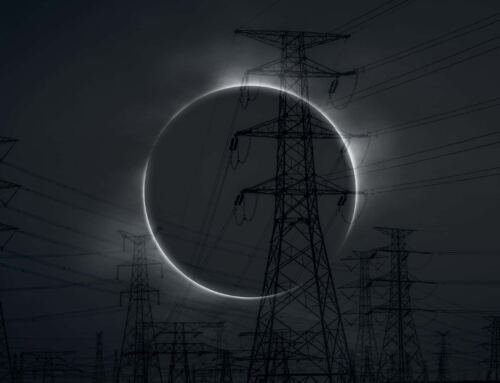After squeaking past a repeat of last year’s Winter Freeze debacle, the Texas heat is here, and ERCOT has a new problem: cyber attacks.
The Texas Grid is not unique with its outdated or lack of integrated and renewable resource planning, neglected distribution grid maintenance or its consistent need to put out wildfires. As an island currently outside of FERC regulation, ERCOT does present a unique opportunity to innovate amongst digital disruptors and emerging energy service companies and thus continue to lead in energy. While the hot Texas summer is an immediate concern, the energy and national security risk of China, Russia or any other nation controlling our power is worse than changing a family’s thermostat without permission.
Texans Demand Power
ERCOT’s proactive solution is “asking” (yes, in some cases telling, and in other remotely changing with hopes of forgiveness) residents to turn their AC up and not use large appliances during the hottest parts of the day. When energy distribution is strained, whether from failing plants, aged distribution and transmission lines, or simply too much demand, energy prices spike.
To keep up with today’s demand, ERCOT has told power plants to delay critical maintenance repairs scheduled for May, when demand is typically lower than in the winter and summer months. However, the early heat waves have already forced plants to delay repairs to avoid added demand and capacity issues. In doing so, the power plants are walking a fine line between performing and failing. Without repairs, these plants cannot operate at full capacity, and may be destined to fall offline if maintenance is not kept up. A recent case occurred a few weeks ago (mid-May) when six generation facilities tripped offline and caused a spike in prices.
A new entrant to increasing demand may shock most Texans and consist of large Bitcoin mining operations at hypergrowth in Texas in recent years. According to Lee Bratcher, president of the Texas Blockchain Council, of the 3,500 megawatts of Bitcoin mining capacity in the United States, more than 40% of it is with ERCOT in Texas. Even just one cryptocurrency miner can use over 400 megawatts of energy in a single day–which is enough to power a large city.
 Energy Security
Energy Security
Lights Out: A Cyberattack, A Nation Unprepared, Surviving the Aftermath was Ted Koppel’s attempt to warn folks of the clear and present danger almost a decade ago. Today the regulatory gridlock has increased while European and Asian nations are 10 to 20 years ahead with integrated renewables, smart buildings and virtual power plant demonstration at scale. Renewable energy planning has struggled in the US due to a combination of factors stemming from green washing, the desire to fund science fiction, and a national lack of reliable data readily available for all consumers.
Utilities, which have fairly limited capabilities to monitor and react to cyber attacks when power flows in one direction (from the plant), now have to deal with a two-lane highway. Prosumers want real-time data, more than one touch point per month from their utility, expect 24/7 monitoring, and want to learn family behavior beyond Nest controls. The delays are understood when an outdated business model is challenged by connected home devices, power grid innovation, and cyber and natural disasters.
Regardless of the political spin, green washing, amongst realities of climate change as well as the unfortunate trends in misinformation, mean that even an engaged prosumer must dig deep to visualize the aggregated power capabilities and our communities’ role in national security. Decentralized and disconnected grids are challenging to orchestrate cyber attacks against. Renewable microgrids and virtual power plants have real-time data insights, not a 15 minute delay and another prayer chain in the bible belt. Gas and renewable energy should be working together to support the utility model and energy transition.
The Solution: Solar
In Texas, energy prices have increased 70% this past year due to market conditions, the invasion of Ukraine, weather-related disruptions, halted oil production, and supply constraints. The expected record-breaking energy demand of 77,713 megawatts this summer will likely cause prices to continue increasing.
Solar allows prosumers to lock in electric rates and shield families from market volatility spikes. Savings begin in month one and payback periods for Texas range from 4 to 7 years on average, with progressive utilities offering a range of incentives and programs.
Powering your home or business with solar supports grid stability with alternative energy generation, offers offgrid power solutions, and is built to increase energy efficiency across load profiles. If you add storage with a battery bank or EV, you have a backup power solution when the sun fades. NATiVE provides realistic scenarios with power quality and performance to demonstrate backup power solutions or simply save money on your electric bill. Now is the time to Take Your Power Back with NATiVE Solar and a call to action for prosumers to restore national security.
































Leave A Comment